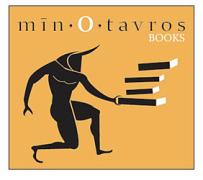I'm not a cat person--if my parents' calico could talk, she'd readily testify to all the ways me and my basset hounds have made her miserable over the past decade. Still, I'd be foolish to ignore that books and cats are a winning combination. Librarian Jan Louch (with Lisa Rogak) explores that special bond in her new book The True Tails of Baker and Taylor: The Library Cats Who Left Their Pawprints on a Small Town...and the World.

Baker & Taylor want you to use the library. © Baker & Taylor LLC. Reproduced with permission from St. Martin's Press
In an era before the morass of social media made Grumpy Cat and other creatures international celebrities, there were Baker and Taylor. Bags, posters, and other freebies from the eponymous library distributor became cult items at library conferences (like the BEA taking place in Chicago this week), and remain fan favorites today, as their namesake company continues to use their likeness on promotional items.
Louch's memoir explains how she and fellow librarians at her sleepy public library in Minden, Nevada, initially adopted a cat to tackle a mouse infestation. When a representative from Baker & Taylor learned the cat was named for their company, a companion was shrewdly purchased for the library. In return, the creatures posed for company advertising, resulting in a wildly successful marketing campaign that remains a cultural touchstone for librarians across the country. Posters and other items routinely pop up on eBay and other auction sites for around $30.

The inaugural members of Douglas County Public Library's Feline Literati section in their first poster for Baker & Taylor. ©Baker & Taylor LLC. reproduced with permission from St. Martin's Press.
Co-author Lisa Rogak was kicking around ideas for a new project about two years ago, and the story of these felines was catnip to her: "I had always known of the Baker and Taylor cats because I've been in publishing for so long," Rogak said earlier this week. "Honestly, I would have thought that a book already existed because they were so famous back in the day, but no book [existed]. I then tracked down Jan Louch, the librarian who cared for them. She emailed me back and after a brief phone conversation I hopped on a plane a week later."
Alongside the cats' rise to fame, the book chronicles the rapid growth in Douglas County, where the population grew over 600% from the 1960s to the early 80s, which meant more library patrons, but not necessarily increased funding. The True Tails of Baker and Taylor also explores Louch's own bibliocentric childhood, where she spent endless days with a book in one hand and an animal in the other. This ode to feline companionship confirms what librarians and literary-minded folk have known for ages: books are better with cats.
The True Tails of Baker and Taylor: The Library Cats Who Left Their Pawprints on a Small Town...and the World, by Jan Louch with Lisa Rogak; St. Martin's Press, $25.99, hardcover, 274 pages. May 2016.
 Sunset magazine; May 1904 issue cover, painted by Chris Jorgensen. The Huntington Library, Art Collections, and Botanical Gardens.
Sunset magazine; May 1904 issue cover, painted by Chris Jorgensen. The Huntington Library, Art Collections, and Botanical Gardens. Mary Roberts Rinehart, Tenting Tonight, cover, 1916. The Huntington Library, Art Collections, and Botanical Gardens.
Mary Roberts Rinehart, Tenting Tonight, cover, 1916. The Huntington Library, Art Collections, and Botanical Gardens. Great Northern Railway, Glacier National Park Invites You, 1925. The Huntington Library, Art Collections, and Botanical Gardens.
Great Northern Railway, Glacier National Park Invites You, 1925. The Huntington Library, Art Collections, and Botanical Gardens.











